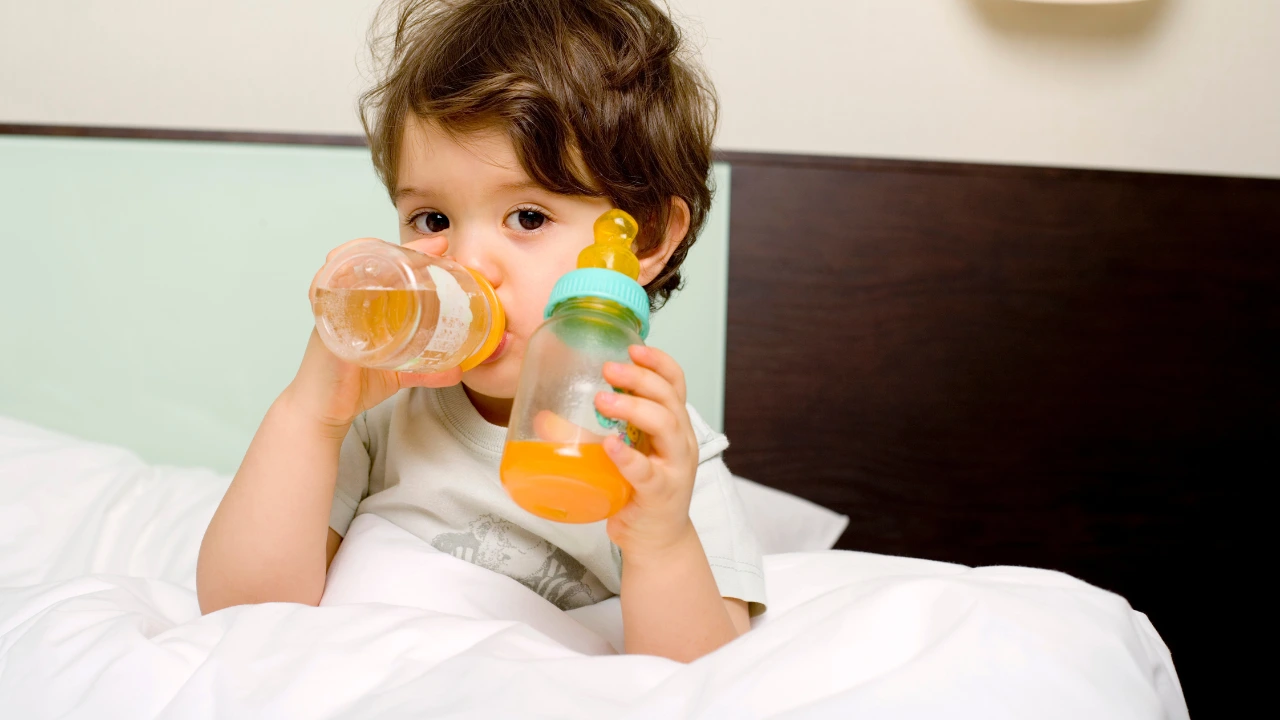
It’s okay to give your baby a little bit of juice once they’re at least a year old, but the best drinks for children are milk and water. Babies under a year old only need to drink breast milk or formula.
According to the Paediatrics, here’s how much juice you can give to kids:
- Younger than 12 months: No juice
- Ages 1 to 3: No more than 4 ounces (1/2 cup) a day
- Ages 4 to 6: No more than 6 ounces (1/2 to 3/4 cup) a day
- Age 7 and older: No more than 8 ounces (1 cup) a day
While juice may seem healthy, even 100-percent juice has less fiber and is less nutritious than whole fruit. It also tends to have more sugar, so it’s healthier for your child to eat fresh fruit instead. They’ll get more nutrients and fiber – and a lot less sugar.
Can juice cause harm?
Too much juice can also cause diarrhea and tooth decay, and even contribute to obesity if kids fill up on juice instead of healthier foods. Giving a child too much juice when they’re very young can impact their eating habits as they grow, too – if they get used to very sweet flavors as babies and toddlers, they’ll develop a strong preference for them and be less likely to want milk or water.
But if you have a picky eater on your hands, experts say it’s okay for fruit juice to account for up to half of the daily fruit servings toddlers need.
The best juice for children is pasteurized, 100 percent juice. Avoid “juice drinks,” which can have as little as 10 percent real juice. (The rest is added sweeteners and flavorings.) And there’s no need to buy juice specially labeled for children – it’s usually the same as regular juice and it often costs more.
Here are some ways you can cut back on how much juice your child drinks:
- Dilute the juice with water – give them a blend of half water, half juice. Older kids may enjoy a blend of half juice, half sparkling water.
- Serve juice in a regular cup, rather than in a bottle, juice box, or sippy cup your child can carry around with them. That way, your child won’t get in the habit of sipping juice all day.
- Only serve juice during meals or snack time, and give your child water or milk when they ask for a drink outside those times.
One other thing to be aware of is researchers have found that some juice products contain potentially harmful levels of heavy metals such as lead, inorganic arsenic, and cadmium. Consumer Reports has a list of these products, as well as suggestions for alternatives.
If you’re looking for an easy way to get more fruits and vegetables in your child’s diet, smoothies are a good option – blending fruits and veggies keeps the fiber content intact, unlike with juicing. If you have the time, making smoothies at home is a great way to go – use whole fruit (fresh or frozen), yogurt, and milk. You can toss in some leafy greens (kale and spinach are popular options) to add nutritional value or nut butter for protein, but don’t add extra sweeteners or protein powders. Your baby doesn’t need extra sugar, and protein powders are formulated for adults, not children.
Store-bought smoothies are fine, but be sure to check the nutrition label for added sugars. Whether you’re giving your child a homemade or store-bought smoothie, watch the serving size. When you’re drinking a smoothie, it’s harder for your body to tell when it’s full (as opposed to eating a meal), and smoothies do still have a good amount of sugar from the fruit. Try to limit the serving size of the smoothie to how much whole fruit your child would regularly eat in one sitting.


Add a Comment